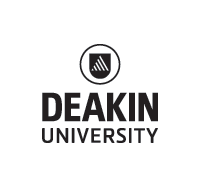EST400 - Primary Technology Education: Creativity and Design
Unit details
| Year: | 2020 unit information |
|---|---|
| Important Update: | Classes and seminars in Trimester 2/Semester 2, 2020 will be online. Physical distancing for coronavirus (COVID-19) will affect delivery of other learning experiences in this unit. Please check your unit sites for announcements and updates one week prior to the start of your trimester or semester. Last updated: 2 June 2020 |
| Enrolment modes: | Trimester 1: Burwood (Melbourne), Warrnambool, Waurn Ponds (Geelong), CBD* |
| Credit point(s): | 1 |
| EFTSL value: | 0.125 |
| Unit Chair: | Trimester 1: Wendy Jobling |
| Campus contact: | Wendy Jobling (Burwood (Melbourne)) Coral Campbell (Waurn Ponds (Geelong), Warrnambool) |
| Prerequisite: | Must have passed 12 credit points including 4 credit points at level 3 |
| Corequisite: | Must be enrolled in E359 |
| Incompatible with: | Nil |
| Typical study commitment: | Students will on average spend 150 hours over the teaching period undertaking the teaching, learning and assessment activities for this unit. |
| Scheduled learning activities - campus: | 1 x 3-hour seminar per week for 10-weeks |
Note:*CBD refers to the National Indigenous Knowledges, Education, Research and Innovation (NIKERI) Institute; Community Based Delivery | |
Content
This unit is designed for students to explore current principles and issues in the teaching of technology, and to enhance their understanding of technology education and technological practice. Students examine the interplay between society and technology and investigate methods of teaching technology education where children are challenged to become effective problem solvers in the design and construction of products to satisfy human needs and wants.
By considering case studies of teaching and learning technology in a global context, students become competent in planning inclusive curricula, which support children to develop technological literacy, knowledge and capability.
Through hands-on technological activities, students observe the links between the Technology Key Learning Area/Domain and other KLAs/Domains such as Art, Language and Science.
| These are the Learning Outcomes (ULO) for this unit At the completion of this unit, successful students can: | ||
| ULO1 | Develop a critical appreciation of design, creativity and technology and its practice, and a knowledge of contemporary issues in the teaching of design, creativity and technology within primary schools, such as cultural constructions of technology, the concept of inclusiveness, sustainability; (Please note that in the Victorian curriculum the term is Technologies: Design and Technology and Digital Technologies.) | GLO1: Discipline-specific knowledge and capabilities |
| ULO2 | Explore their technology understandings and develop their design, creativity and technological knowledge and capability | GLO1: Discipline-specific knowledge and capabilities GLO4: Critical thinking GLO5: Problem solving |
| ULO3 | Identify different approaches to teaching and learning in design, creativity and technology education, including those that apply to early and middle years students | GLO1: Discipline-specific knowledge and capabilities |
| ULO4 | Develop competence in planning curriculum and designing teaching approaches that support students in developing technological literacy | GLO1: Discipline-specific knowledge and capabilities GLO2: Communication GLO3: Digital literacy GLO6: Self-management GLO7: Teamwork |
| ULO5 | Explore and evaluate the links between technology education (design, creativity and technology) and technology within communities | GLO1: Discipline-specific knowledge and capabilities GLO4: Critical thinking GLO8: Global citizenship |
| ULO6 | Experience the culture of technological practice and its interplay with society; and develop their own perspectives of technology | GLO1: Discipline-specific knowledge and capabilities GLO8: Global citizenship |
These Unit Learning Outcomes are applicable for all teaching periods throughout the year
Assessment
Trimester 1:| Assessment Description | Student output | Grading and weighting (% total mark for unit) | Indicative due week |
|---|---|---|---|
| Assessment 1 - Seminar response activities | 20% | Information not yet available | |
| Assessment 2 - Design Curriculum Task: Written report, which will focus on curriculum development within the primary school context | 30% | Information not yet available | |
| Assessment 3 - Community Project: Written report and presentation in response to a community need | 50% | Information not yet available | |
| Assessment will total the equivalent of 4000 words | |||
The assessment due weeks provided may change. The Unit Chair will clarify the exact assessment requirements, including the due date, at the start of the teaching period.
Learning Resource
The texts and reading list for the unit can be found on the University Library via the link below: EST400 Note: Select the relevant trimester reading list. Please note that a future teaching period's reading list may not be available until a month prior to the start of that teaching period so you may wish to use the relevant trimester's prior year reading list as a guide only.
Unit Fee Information
Click on the fee link below which describes you:
